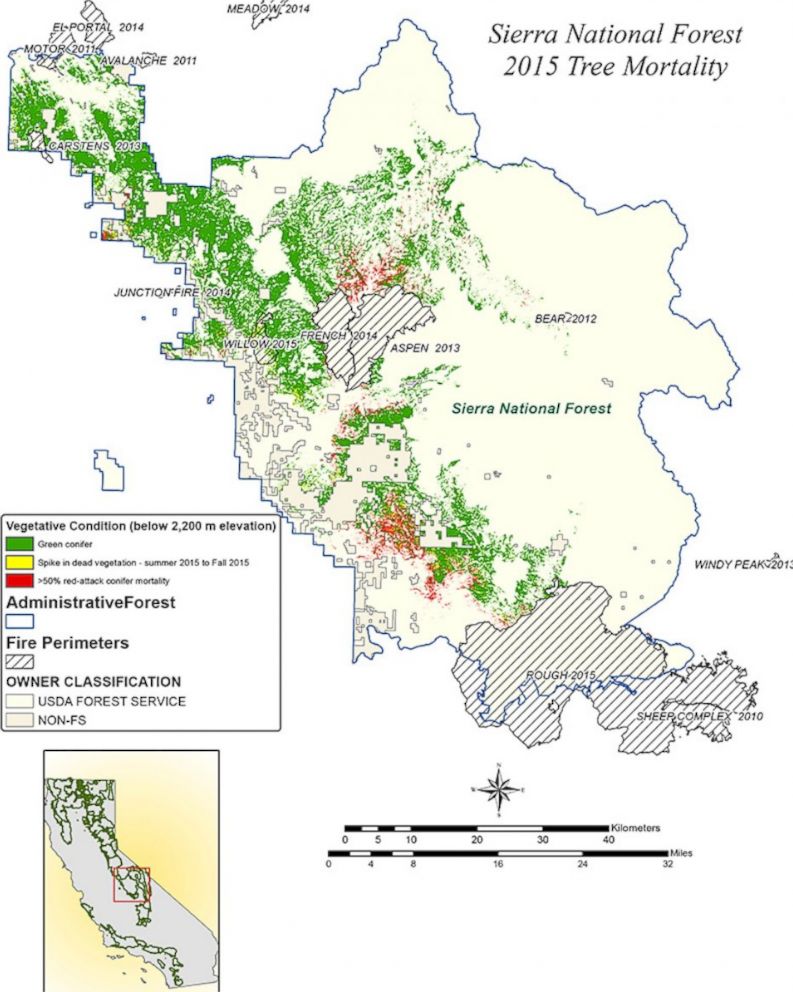California Drought Causing Trees to Die by the 'Millions,' Scientist Says
NASA map of Sierra Nevada Region shows scale of devastation caused by drought.
— -- The devastation the California drought has caused to conifer trees in the Sierra Nevadas over the last couple of years "is far greater than previously observed," NASA scientists said in announcement of the publication of new map of the region.
David Schimel, a senior research scientist who worked on the study, told ABC News that the map represented NASA's "first close look" at the extent of the damage caused by drought on Sierra trees.
Schimel referred to the findings as "millions of trees dying at once."
The map was created with measurements from NASA’s Airborne Visible/Infrared Imaging Spectrometer instrument, which was developed by NASA's Jet Propulsion Laboratory in Pasadena, California. The image was created by scientists at the U.S. Forest Service's Pacific Southwest Region Remote Sensing Lab, in McClellan, California, by performing a time series analysis of AVIRIS images taken from NASA's ER-2 aircraft.
NASA said that the map will be used to help the USFS assess and respond to the impacts of increased tree mortality caused by the drought.

Wildfires have plagued California throughout the summer of 2016.
California Department of Forestry and Fire Protection spokesman Daniel Berlant told The Associated Press that the Red Cross has set up an evacuation center in Auburn, near Sacramento and 140 miles northeast of San Francisco, in reaction to the most recent wave of fires affecting the region.
Schimel said the death of the trees was caused by a number of factors, related to climate change.
"These are trees that have been stressed by heat and a lack of water for a number years," he said. "Some of them died of a lack of water and others died from insects and plants. Trees would normally be resistant to such threats but the drought weakens them."
He also said that the map points to what could represent a permanent change in the landscape of the region.
"The drought has some momentum, there could be a wave of mortality that continues for the next several years," he said. "The biggest concern here is that the trees that are dying are decades old or even centuries old, and this mortality rate means that the Sierras will be changed during our lifetimes and our kids' lifetimes."




